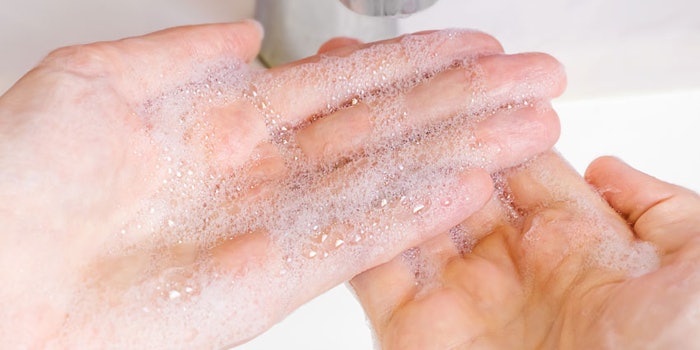
With COVID-19 so prominently in the news, in this month's column, Tony O’Lenick sought to clarify: What's the difference between cleaning, sanitizing, disinfecting and sterilizing? Rick Theiner, of Evonik, responds.
Cleaning
Cleaning is the process by which primarily organic materials, such as dirt, soil or biofilms, are removed. It is a chemical process as well as a physical process. The soil is either dissolved or emulsified into water. Detergents and surface active agents are commonly used to clean. Cleaning and sanitizing are carried out in separate steps since dirt, soil or biofilms need to be cleaned before sanitizing. Soap is an example of a material that cleans and also provides some sanitization.
See related: Hand Hygiene and Disease Prevention, Part I
Sanitizing, Disinfecting and Sterilizing
The other three terms, i.e., sanitizing, disinfecting and sterilizing, relate to reducing the concentration of viable microbes. “Log reduction” is a mathematical term showing a reduction in the number of live germs logarithmically. It denotes the relative number of live microbes eliminated from a surface due to sanitizing, disinfecting or cleaning. A '1' log reduction, for example, means the number of germs on a surface is 10 times smaller than prior to cleaning. A '2' log reduction means the number is 100 times smaller; a '3' log reduction is 1,000 times smaller, and so on...up to '7' (or 10,000,000 times smaller).1
Sanitizing is the process that delivers a log 3 reduction, destroying 99.9% of the microbes present.
See related: Formulating on Trend, Hand Sanitizer
Disinfecting is a more aggressive process than sanitizing in that it eliminates 99.99% (log 5) of microbes. Note that disinfection generally is not recommended as this can include some chemicals that are too harsh for cosmetic applications. A good example is bleach; while useful in many applications, it is not recommended for skin contact.
Sterilization is a process that seeks to completely eliminate microbes, offering a log 12 reduction in microorganisms. Sterilization destroys all microorganisms on the surface of an article or in a fluid in order to prevent disease transmission associated with the use of that item.









